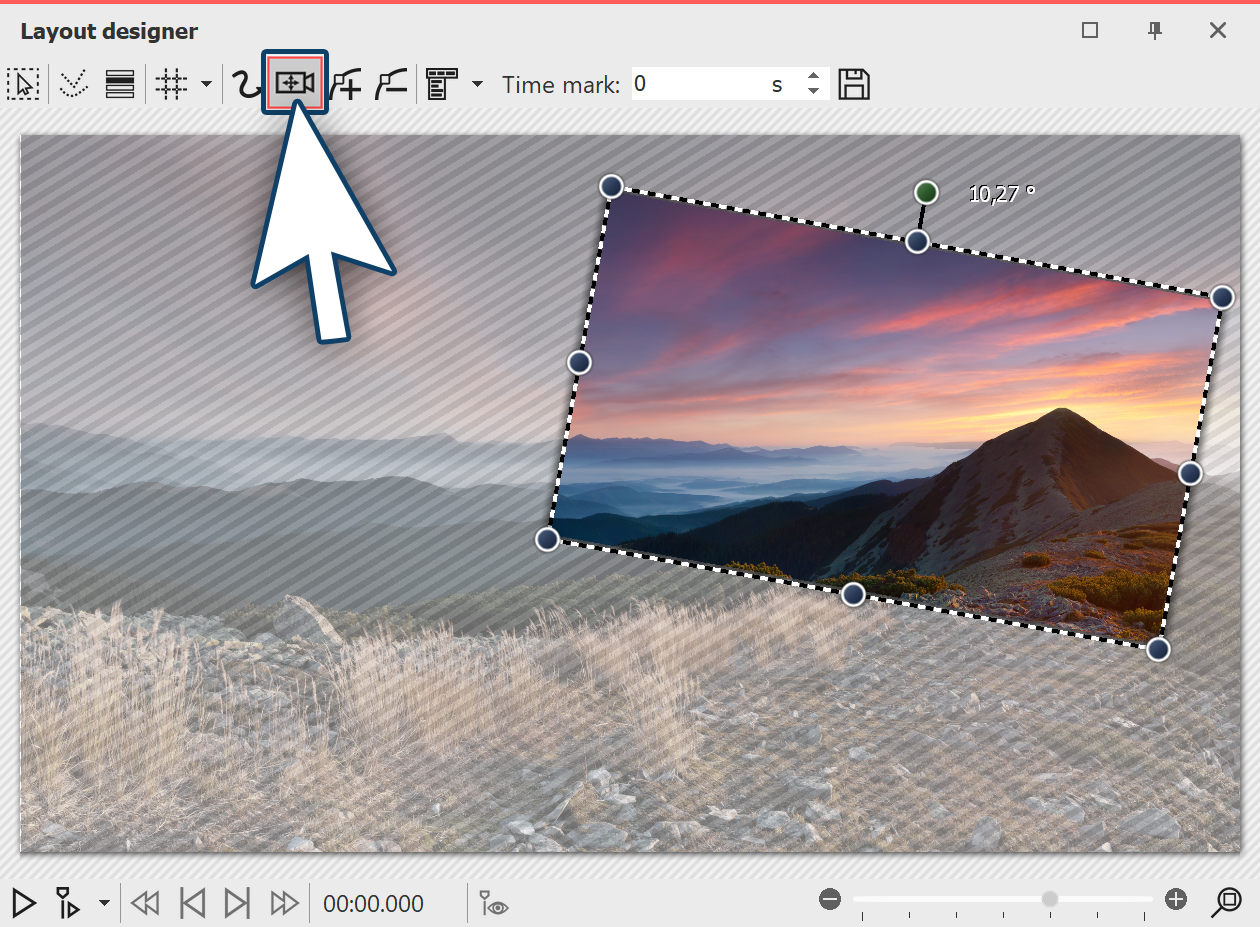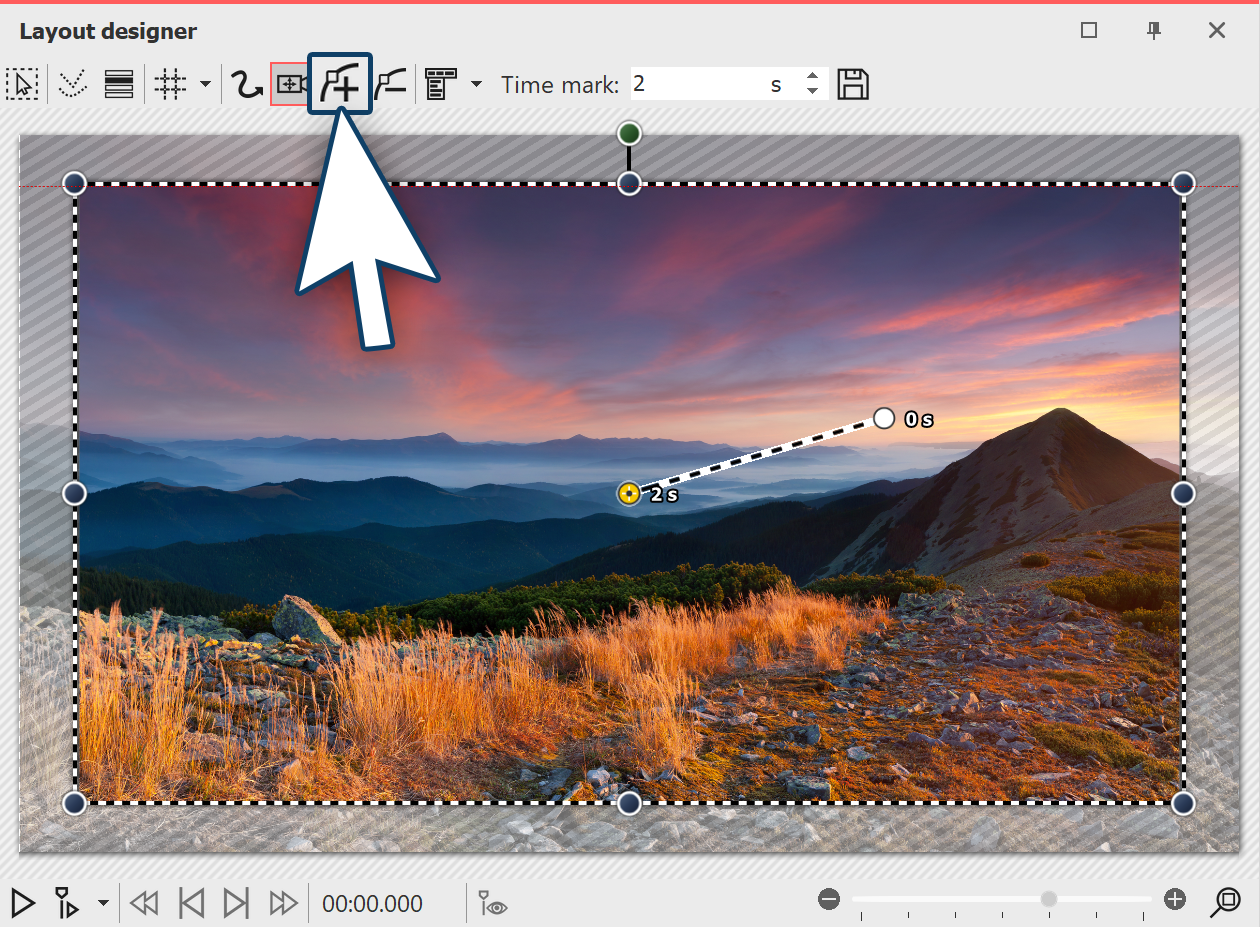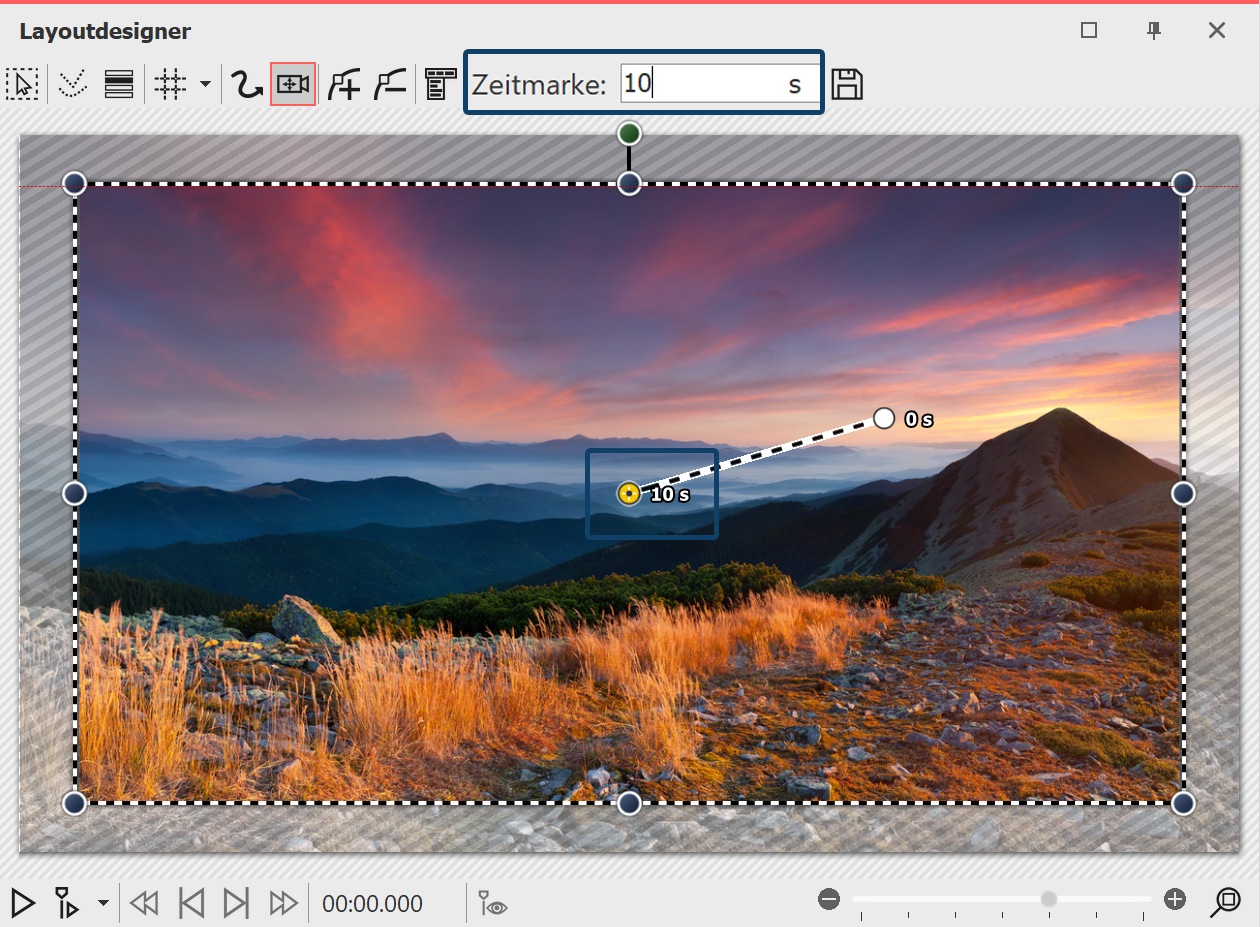|
<< Click to Display Table of Contents >> Camera panning with rotation |
  
|
|
<< Click to Display Table of Contents >> Camera panning with rotation |
  
|
You can rotate the camera panning at any marker, as you like In this example we will show you how you can pan into a longshot from a rotated starting view.
|
An important difference when rotating with the movement path is that the image itself does not rotate, rather the perspective of the viewer. |
 Rotated image section Click the image object in the Image list or Timeline so that the image will be displayed in the Layout designer. Now activate the zoom & camera panning tool , by clicking on the corresponding icon in the top bar of the Layout designer. If the zoom & camera panning tool is active, for a short time the words “camera panning” will appear over the image in the Layout designer. As soon as you have activated the zoom & camera panning, you will see a dotted border around the preview image, the positioning frame. Reduce the size of this positioning frame and determine which section of the image is to be shown first. Above the dotted frame you will find a dark green point. Use the mouse to drag the point and adjust the angle of the image detail. Make sure that the dotted frame is always withint the visible area in the Layout designer. |
 Inserting new motion markers Now there will be a zooming out from the small image section to a larger. The section will once more be upright. Click on the square plus icon to insert a motion marker or use the insert key. A new positioning frame will appear which, like the previous, is still lopsided. Use the mouse to drag the dark green dot and straighten the frame. Then use one of the dark blue drag point and drag the frame larger. Alternatively, after inserting the second marker, you can right click on the positioning frame and call up the context menu. If you select the positioning frame - scaling to full screen the positioning frame automatically includes the entire image with a straightened angle. |
 Extending time So that the camera does not pan too abruptly from one section of the image to the next, you can lengthen the time it takes for the camera panning. To do this select the second marker, so that the middle point, located in the section of the image you are using, appears orange. Under timestamp you can now enter a higher value, such as 10 seconds. |